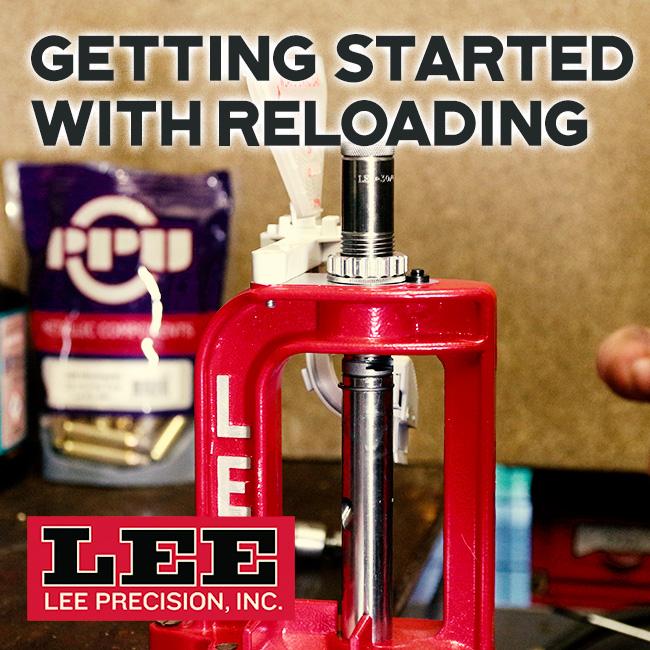We use cookies to make your experience better. To comply with the new e-Privacy directive, we need to ask for your consent to set the cookies. Learn more
You've Bought Lee Reloading Equipment, Now What?
You've finally taken the plunge and bought your first reloading kit (Lee in this instance) unpacked all the boxes and laid it out in your reloading space, on first look it all does look a little daunting. The following is based on reloading an already fired .308 case.
Getting started with reloading
To help things along here are some suggestions on how to get going.
Ideally you want a dedicated space to install and leave your reloading equipment away from general view. If this is not possible, I would suggest using the Lee Bench Plate and Lee Base Block which would allow easy mounting and removal.
Always refer to a quality reloading manual for your load data and read all sections before undertaking any initial reloading. The Sierra Reloading Manual and the Lee Modern Reloader book are both highly rated.
Lee decapping die is a good idea, as you aren't ready to resize the case yet.
- Clean the primer pocket out using the Lee Primer Pocket Cleaner.
- Place the cases in a container of slightly warm water with Birchwood Casey's brass cartridge cleaner and let sit for 30 minutes. This loosens the powder residue, giving a better final finish.
- Once the cases have sat for a while, remove, and then allow the cases to dry either naturally or use a case dryer such as the Scirocco Case Dryer.
- Once dry, load the tumbler with media and pop the cases in, and tumble them until they are as shiny as new, generally about 30-60 mins depending on calibre.
- Remove cases, pouring any media in the case back into the tumbler. Ensure that the primer hole is clear and that a small piece of media hasn't got stuck in it. If this is the case use a small jeweller's screwdriver or similar to pop out.
- Visually inspect each case for damage and if any are damaged or cracked, scrap the case. Any small amount of dirt, debris or discoloration can be removed using either fine wire wool or a brillo pad. Another option is to tumble for longer.
- Lube the cases with resizing lubricant on a lube pad, they should only be very mildly tacky. Too much lubricant will cause a hydraulic lock in the die and potentially bulge the case. A single tube of lubricant should last many thousands of cases, Lee Resizing Lube is a good choice.
- Set up the resizing die on the press following the relevant instructions, resize accordingly. There are two ways to resize a case, full length, or neck size. For the average shooter and reloader like myself I always full length resize. Wipe case. If you roll the case along a piece of glass it will allow you to check its concentricity, your eye should pick up any wobble.
- Measure the case, and trim if necessary, to length using either a quick trim die or case length gauge and cutter and lock stud. Measure case using digital calipers to ensure correct length.
- Chamfer the neck using the Lee Chamfer Tool.
- Insert primer either on the press or using a hand primer, personally I prefer this way as it allows more feel, though either will work fine. Place primed case on flat service to ensure primer not seated proud, in other words no wobble.
- Fill with desired powder load, using powder measure or weigh with electronic scales and fill using correct size funnel.
- Set up bullet seating die as per instructions, insert desired bullet to complete finished round and crimp if required.
- Measure overall cartridge and if correct wipe down and place in ammunition box.
- Record load data on box or reload data book.
Over time you will have your own way of doing things, personally I reload in batches and document the relevant batch of cases in relation to times used. If I identify any faults in that batch, I discard all of them.
Remember, always used published load data, and take the utmost care when reloading, inspecting every process. Reloading's an excellent hobby and can save you a lot of money, particularly if loading multiple calibres. Read our related blogs below to find out more.
View the full range of Lee Precision Reloading Equipment here.
Other interesting blogs:
Henry Krank Glossary Of Reloading Related Words And Terms



